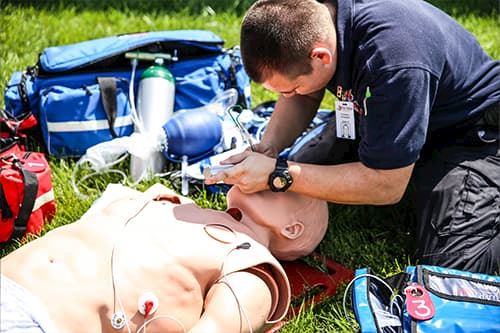Trainings
Learn the concepts of sort, set in order, scrub, standardize, and sustain with a focus on safety. Gain an understanding of how 5S and 6S principles can improve effectiveness through simple organizational strategies. The accelerated training reinforces concepts with hands-on application customized to your specific workplace.
Provides the skills to effectively stand up for yourself. Learn to express your feelings, preferences and views, while at the same time respecting the opinions and rights of others. Leave the training with effective speaking and active listening skills that enable you to achieve your goals.
Explore the basic features and commands of Illustrator to create and modify graphics.
Refreshes the knowledge/skills required for Advanced EMT (Intermediate Technician) re-licensure. A certificate of completion will be issued and verification of completion will be entered into the WI EMS e-licensing system. Students will receive an FVTC AEMT Refresher certificate. Current AHA BLS Provider CPR or equivalent and current Wisconsin/National Registry AEMT licensure required.
Designed to teach students who are striving to become better handgun armorers, this class will not be a repeat of the same certification recertification class. Since Glock no longer offers their 2-day advanced armorer class outside of Georgia, this class provides a local opportunity to advance your handgun smithing abilities.
Explore the Myers-Briggs Type Indicator (MBTI) and take a deeper dive to apply the concepts of personality types. Learn about your personality and how to work with others, while reducing stress using the Myers-Briggs Type Indicator.
It’s more than a flow chart. Learn the differences between Value Stream Maps and Process Maps. We will review the art of Process Mapping and how to use it as a tool for seeing waste in your work processes and identifying opportunities for improvement.
Be introduced to what Agile Project Management is and how it works to make a project more likely to succeed with a positive customer experience.
Testing with an AHA Instructor (ACLS or PALS, based on the course). The cognitive portion of American Heart Association eLearning courses can be completed online or through another computer-based or electronic medium. After successful completion of the cognitive portion of the program, students will receive a Part 1 completion certificate to be presented to the instructor before proceeding with Parts 2 (practice) and 3 (testing). Students should come into their skills testing session prepared to perform skills.
Teaches and evaluates two-rescuer CPR, one-rescuer CPR, obstructed airway technique for the adult/child/infant, adult/child Automated External Defibrillator (AED), pocket mask and Bag Valve mask. Students receive an American Heart Association Healthcare CPR card with two-year certification.











